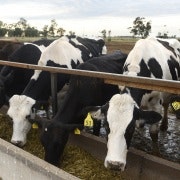Telstra's NBN speed hump
One of the most common questionings of the proposed National Broadband Network is: "What if they build it and no-one comes?" Well, we may be about to find out even before the NBN is built.
Telstra's announcement that it will switch on its upgraded hybrid fibre coaxial cable network in Melbourne from December 1 will provide something of a preview of the early years of the NBN.
The network upgrade was announced in the dying days of the Donald McGauchie/Sol Trujillo regime and in the lead up to the announcement of the outcome of the original NBN tender process – the one that didn't produce a conforming or acceptable tender and led to the brilliant political strategy of, not announcing a failure, but the glittering new fibre-to-the premises network at a cost to taxpayers of up to $43 billion.
McGauchie and Trujillo didn't know what was coming towards them. They thought the government was within weeks of announcing that a consortium, not including Telstra, would build a fibre-to-the-node network, cutting across Telstra's copper lines, at a cost to the taxpayer of $4.7 billion or so.
So they came up with an idea designed to demonstrate Telstra's ability to threaten the new network, protect its own position in the sector and provide a two-finger salute to the government in the process.
The idea was to spend $300 million to upgrade the HFC cable network Telstra owns in the capital cities. The original NBN was supposed to deliver minimum speeds of 12 Mbps. Telstra would upgrade the speeds available through the HFC – which passes a million homes in Melbourne – to 100 Mbps. Should the upgrade go well, they were warning, they could spend a total of less than $1 billion to deliver 100 Mbps to all the capitals.
The HFC upgrade and Telstra's show of continuing defiance and aggression might have been a provocation too far, forcing the government to consider the impact of such an upgrade on the richest consumer markets and its implications for the original NBN.
Ultimately it revealed the 'new' NBN, with its own 100 Mbps capacity (and higher upload speeds), as well as a package of threatening and punitive new regulatory measures to ensure Telstra was finally brought to heel.
The 'new' Telstra, chaired by Catherine Livingstone and with a new CEO, David Thodey, inherited the upgrade, along with a lot of other legacies of Telstra's combative recent past.
They must have been tempted to defer offering any new services until they reached agreement with the NBN and government in the negotiations now taking place of the level and value of any cooperation Telstra offers the NBN, as well as the future scope of its activities. However, the upgrade has been completed and the government would be well aware of that.
The problem the new faster broadband network poses for both Telstra and the NBN, however, was encapsulated in Telstra's announcement that the network was ready to go.
According to Telstra, the upgrades to the cable and services would mean that "the download capacity they offer is so fast that they exceed the capabilities of many internet sites and computers."
It said this meant the actual speeds individual customers received would be affected by their equipment, server limitations and Wi-Fi reception and capacity and would therefore be less than the total capacity into the home.
That is, for the moment, the problem with delivering 100 Mbps to the home – there aren't the consumer devices available, or indeed even on the horizon it appears, to actually take advantage of those speeds.
That's why Telstra is launching its 'T-Box' as part of the upgrade, a set-top box with the ability to view and record free-to-air television programs and provide access to Telstra's Big Pond internet services and movie downloads. The aim is to encourage simultaneous usage of multiple household devices and encourage capacity-intensive downloads to take at least some advantage of the speeds.
The upgrade actually cost Telstra less than $300 million but it appears, for the moment at least – and perhaps permanently – there are no plans to roll out similar upgrades in the other capitals.
If, in the near to medium term, there isn't anything in households that requires or could use 100 Mbps there is no point in spending more money to be able to offer it.
That is, at least in its ramp-up phase and probably for at least some years beyond its roll-out, a critical issue for the NBN.
Big businesses already have high-speed fibre, as do many medium-sized enterprises. Fibre-to-the-premises – or at least the most expensive 'last mile' element of it – is fundamentally a consumer and small business proposition.
However, unless households are going to run half a dozen capacity-hungry applications at once the NBN speeds will be largely irrelevant to most of its users, at least for some significant period.
That could, of course, change in the long term as new applications and services are developed, but so might other settings. Telstra has said it could upgrade the HFC to 200 Mbps if it wished, and wireless speeds are ratcheting up continually.
If Telstra believes it has probably wasted the best part of $300 million to offer speeds few, if any, can actually use, spending up to $43 billion to offer those same speeds becomes a gigantic and very hopeful bet on the future of household technologies and consumer demands.
The NBN is going to be built. For the taxpayers 'sake, we'd better hope that applications and devices capable of exploiting 100 Mbps come.
















